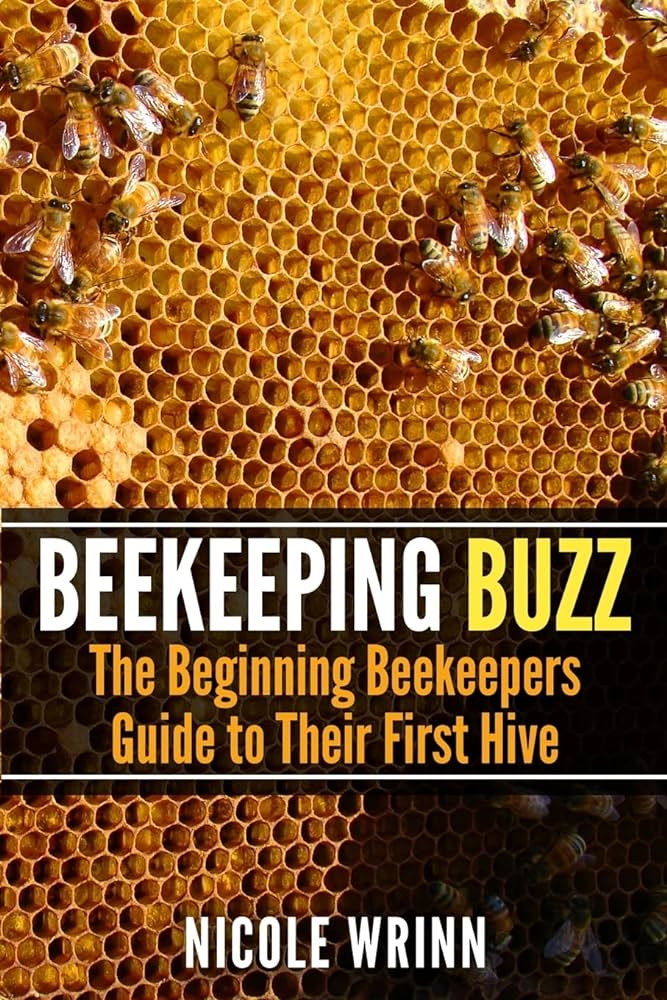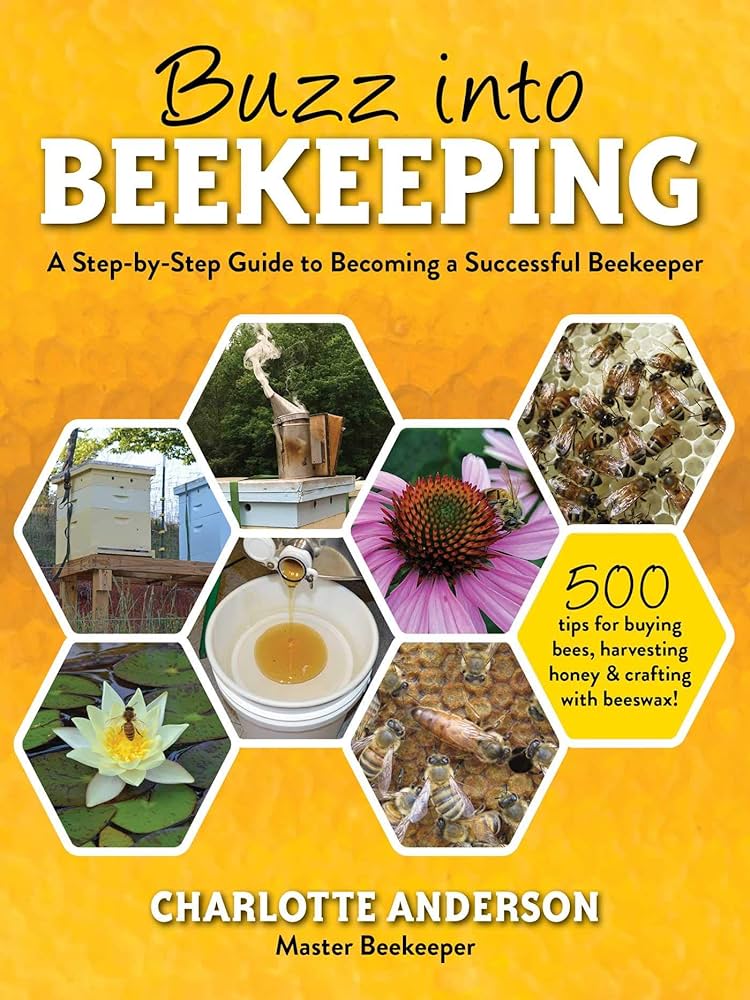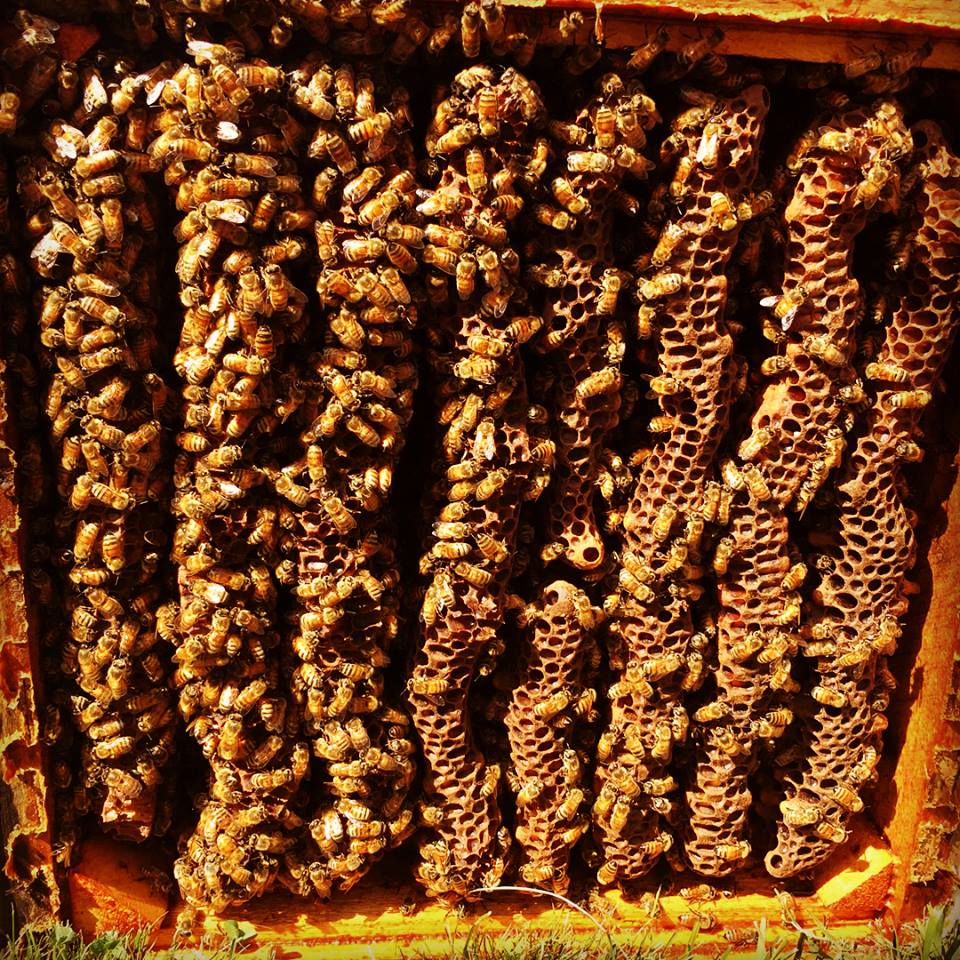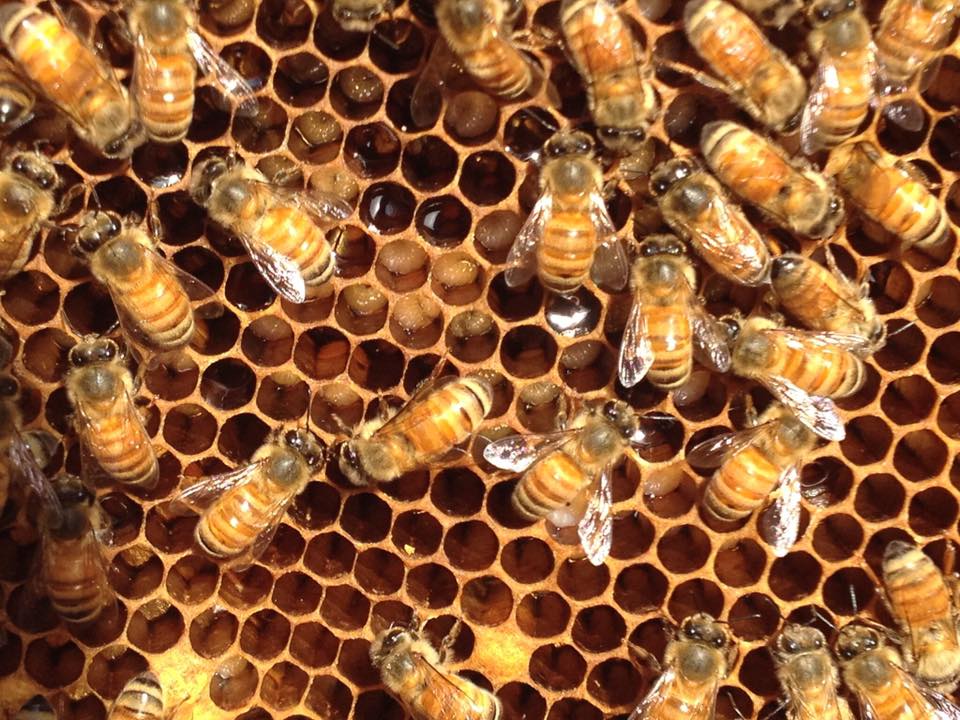
Have you ever been fascinated by the buzzing sound of bees and wondered what it would be like to have your own hive? Look no further! This article will guide you through the basics of beekeeping, providing all the essential information for beginners who are eager to start their own hive. From understanding the importance of honeybees to learning the equipment needed, get ready to embark on an exciting journey into the world of beekeeping.
1. Why Beekeeping?
Beekeeping has gained popularity in recent years, and for good reason. Not only does it offer numerous benefits, but it also plays a vital role in the environment and can provide a deep sense of personal fulfillment.
1.1 Benefits of Beekeeping
When you delve into the world of beekeeping, you’ll discover a wide range of benefits. One of the most obvious advantages is the production of honey. Harvesting your own delicious, pure honey is a rewarding experience that many beekeepers cherish. In addition, beekeeping can be a source of income if you decide to sell your honey or other bee-related products.
But the benefits don’t stop there. Bees are natural pollinators, and by keeping a hive, you are helping to ensure the pollination of plants in your surrounding area. This leads to vibrant and abundant gardens, improved fruit yields, and a healthy ecosystem.
1.2 Environmental Importance
Beyond the honey and pollination benefits, beekeeping is also crucial for the environment. Bees are facing numerous threats, including habitat loss, pesticide exposure, and disease. By becoming a beekeeper, you are actively contributing to their preservation. You are providing a safe haven for bees and helping to maintain biodiversity in your local area.
1.3 Personal Fulfillment
Beekeeping is an incredibly satisfying hobby that offers a sense of connection to nature and the cycle of life. Observing the behavior of these remarkable creatures and playing a role in their wellbeing can be a deeply fulfilling experience. Furthermore, beekeeping provides an opportunity to learn and appreciate the intricate workings of a beehive, fostering a sense of wonder and curiosity.
2. Getting Started
Starting your beekeeping journey requires an understanding of the basics, the right hive, and the necessary equipment.
2.1 Understanding the Basics
Before diving into beekeeping, it’s important to educate yourself about bees, their behavior, and the tasks involved in caring for a hive. There are various books and online resources available that provide valuable information for beginners. Learning about bee biology, hive management techniques, and common challenges will help you feel more confident as you begin your journey.
2.2 Choosing the Right Hive
Choosing the right hive for your beekeeping venture is essential. The two most common types of hives are Langstroth and Top Bar hives. The Langstroth hive is the standard choice for most beekeepers and is known for its modularity and ease of use. On the other hand, the Top Bar hive offers simplicity and allows bees to build their comb naturally.
Consider factors such as your location, budget, and personal preference when deciding on a hive type. Research and consult experienced beekeepers to make an informed choice.
2.3 Required Equipment
To get started with beekeeping, you will need several essential pieces of equipment. These include a beekeeping suit or protective clothing, smoker, hive tool, bee brush, and a hive feeder. It is important to have these items ready before introducing bees into your hive. Additionally, proper storage and maintenance of your beekeeping equipment will ensure its longevity and effectiveness.

This image is property of Amazon.com.
3. Beekeeping Regulations
Before establishing your hive, it is crucial to familiarize yourself with the local laws and ordinances regarding beekeeping in your area.
3.1 Local Laws and Ordinances
Different regions and municipalities have specific regulations surrounding beekeeping. Some areas may require beekeepers to obtain permits or adhere to certain beekeeping guidelines. It is essential to research and comply with these regulations to ensure you are practicing beekeeping in a legal and responsible manner.
3.2 Registering Your Hive
In some areas, beekeepers are required to register their hives with local authorities. This helps authorities track bee populations, monitor potential disease outbreaks, and provide support to beekeepers in case of emergencies. Check with your local agricultural extension office or beekeeping association to determine if hive registration is necessary in your area.
3.3 Safety and Liability
Beekeeping involves working with live insects that can sting, so it’s important to prioritize safety. Consider installing a fence around your apiary to prevent accidental encounters with your bees. Additionally, beekeepers should be mindful of their neighbors and ensure that the placement of their hives adheres to local guidelines and doesn’t cause any disturbances.
It’s also prudent to have liability insurance in case of any unforeseen incidents. Discuss this with your insurance provider to understand the coverage options available for beekeeping activities.
4. Sourcing Your Bees
Once you have the necessary knowledge, hive, and equipment, it’s time to acquire your bees.
4.1 Types of Bees
There are several types of bees available for beekeepers. The most common type is the European honeybee (Apis mellifera), which is well-suited for most regions. Other less common types include Russian honeybees and Italian honeybees, each with their unique characteristics and adaptations.
Consider factors such as climate suitability, desired traits, and availability when selecting your bee type. Local beekeeping associations or suppliers can provide guidance on which bees are best suited for your area.
4.2 Buying Bees
The most common way to acquire bees is by purchasing them from reputable bee breeders or suppliers. When buying bees, opt for packages or nucleus colonies (also known as nucs) that include a queen and a sufficient number of worker bees. Be sure to source your bees from a trusted supplier to ensure their health and quality.
4.3 Catching Wild Swarms
Another way to obtain bees is by capturing wild swarms. Swarming is a natural process in which a colony splits, and a portion of bees leaves to form a new hive. While catching wild swarms can be thrilling and cost-effective, it requires some expertise. Reach out to experienced beekeepers or local beekeeping associations for guidance on safely capturing and relocating swarms.

This image is property of Amazon.com.
5. Hive Management
Once your bees are settled into their new home, it’s important to properly manage the hive to ensure their health and productivity.
5.1 Hive Inspection and Maintenance
Regular hive inspections are essential to monitor the health of your bees and detect any issues early on. During inspections, you will need to check for the presence of the queen, the brood pattern, honey stores, and signs of disease or parasite infestations. Inspections also provide an opportunity to perform necessary hive maintenance, such as replacing frames, repairing any damage, and ensuring proper ventilation.
5.2 Feeding Your Bees
Bees require a sufficient food supply to thrive, especially during times when nectar sources are scarce. Supplemental feeding can be done using sugar syrup or pollen patties. Carefully follow feeding guidelines to prevent overfeeding or underfeeding, as both can have detrimental effects on the hive. It’s important to offer a balanced diet to support the overall health and productivity of your bees.
5.3 Recognizing Disease and Pests
Disease management is a crucial aspect of beekeeping. Familiarize yourself with common honeybee diseases and pests, such as Varroa mites and American foulbrood, and learn how to identify their symptoms. Regular hive inspections and monitoring methods such as sticky boards can help detect any signs of disease or infestations. If you suspect a disease or pest problem, consult with local beekeeping experts or extension services to determine the appropriate treatment options.
6. Harvesting Honey
One of the most exciting aspects of beekeeping is harvesting your own honey. However, timing and proper techniques are crucial to ensure a successful harvest.
6.1 Best Time to Harvest
The ideal time to harvest honey is when the honey frames are capped, indicating that the honey has reached the appropriate moisture content for storage. Late spring or early summer is often the prime time for honey harvesting, as bees have had ample time to collect nectar from blooming plants.
6.2 Extracting Honey
To extract honey from the frames, you will need a honey extractor. This device spins the frames, using centrifugal force to separate the honey. Carefully follow the manufacturer’s instructions to avoid damaging the frames or contaminating the honey. After extraction, let the honey settle and remove any impurities before storing it in clean and airtight containers.
6.3 Storing and Selling Honey
Proper honey storage is crucial to maintain its quality. Keep your honey containers in a cool, dark place to prevent crystallization and preserve its flavor. Label your honey with the harvest date and any relevant details or certifications.
If you decide to sell your honey, research local regulations regarding labeling and selling bee products. Consider participating in local farmers’ markets or establishing a direct customer base to share your delicious honey with others.

This image is property of trigablelea.com.
7. Dealing with Challenges
Beekeeping comes with its fair share of challenges, but with knowledge and preparation, these obstacles can be overcome.
7.1 Seasonal Considerations
Different seasons present different challenges for beekeepers. Be prepared to adjust your hive management practices during colder winter months and address issues such as potential starvation, condensation, and pest management. Similarly, during the warmer months, be vigilant in monitoring the hive for potential swarming or hive congestion.
7.2 Challenges for Beginners
As a beginner, it’s important to be aware of the common challenges beekeepers face. These may include hive pests and diseases, queen issues, or even unexpected weather events. Stay connected with local beekeeping associations and experienced beekeepers who can provide guidance and support as you navigate these challenges.
7.3 Finding Local Support
Joining a local beekeeping association or club can provide invaluable support, mentorship, and the opportunity to connect with fellow beekeepers. These communities offer a wealth of knowledge and resources to help you overcome challenges, exchange ideas, and expand your beekeeping skills. Attend workshops, meetings, and conferences to learn from experienced beekeepers and stay up to date with the latest best practices.
8. Beekeeping Sustainability
Beekeeping can actively contribute to the sustainability of your local ecosystem. By implementing certain practices, you can support the health and wellbeing of both your bees and the environment.
8.1 Supporting Native Plants
Planting a diverse range of native, bee-friendly plants in your vicinity can provide bees with ample sources of pollen and nectar throughout the year. Research the native plants in your region that are attractive to bees and incorporate them into your garden or the surrounding area. Avoid using pesticides or herbicides that can harm bees and other beneficial insects.
8.2 Minimizing Pest Control
While it is important to manage pests and diseases in your hive, it’s also crucial to use integrated pest management practices that minimize the use of harsh chemicals. Regular monitoring, maintaining strong and healthy colonies, and implementing non-chemical control methods can help reduce the reliance on chemical treatments. Always use approved treatments and follow the instructions carefully to minimize any negative impact on your bees and the environment.
8.3 Bee-Friendly Practices
Adopting bee-friendly practices in your beekeeping journey can have a positive impact on the wellbeing of your bees. Provide a clean and water source for your bees, ensure they have access to ample forage, and maintain a clean hive environment. Regular hive inspections and proactive disease management will help keep your bees healthy and productive. Always prioritize their welfare and strive to create a supportive and sustainable environment for your hives.

This image is property of Amazon.com.
9. Expanding Your Hive
Once you have gained confidence and experience as a beekeeper, you may consider expanding your hive to increase your bee population and honey production.
9.1 Splitting Your Hive
Hive splitting is a method of creating a new colony by dividing an existing hive. This process involves separating a portion of bees, brood, and resources to form a separate hive. Splitting can help prevent swarming and allow you to maintain control over the growth of your beekeeping operation. Research and consult experienced beekeepers to learn the techniques and timing of hive splitting specific to your region.
9.2 Buying Additional Bees
If hive splitting isn’t feasible or you wish to expand your bee population more quickly, buying additional bees is an option. Similar to acquiring your initial bees, purchase bees from reputable breeders or suppliers. Ensure that the new bees are compatible with your existing hive and that you have sufficient space and resources to accommodate the increased population.
9.3 Swarm Traps and Bait Hives
Another way to expand your hive is to attract swarms using swarm traps or bait hives. These specialized hives are specifically designed to entice swarming bees to establish a new colony. Place these traps in strategic locations known for attracting swarms, such as high up in trees or near existing hives. Regularly check and monitor these traps during swarm season to increase your chances of successfully capturing swarms.
10. Beekeeping Resources
To further enhance your beekeeping knowledge, explore the wide range of resources available to beekeepers.
10.1 Books and Guides
Books and guides are invaluable sources of information for beekeepers at all skill levels. Look for publications that offer comprehensive and up-to-date information on beekeeping techniques, disease management, and hive maintenance. Some notable books for beginners include “The Beekeeper’s Handbook” by Diana Sammataro and Alphonse Avitabile, and “The Backyard Beekeeper” by Kim Flottum.
10.2 Online Communities
Participating in online beekeeping communities can provide a platform for knowledge sharing, troubleshooting, and networking with beekeepers worldwide. Websites, forums, and social media groups are excellent resources to connect with experienced beekeepers, ask questions, and gain insights from their experiences. Join platforms such as Beesource, Reddit’s r/Beekeeping, and the Beekeeping Forum to engage with fellow beekeepers in vibrant online communities.
10.3 Beekeeping Courses
If you prefer a more structured approach to learning beekeeping, consider enrolling in beekeeping courses. Many beekeeping associations, colleges, and universities offer beginner and advanced courses on various aspects of beekeeping. These courses provide hands-on experience, comprehensive instruction, and the opportunity to learn from experienced professionals in a supportive learning environment.
In conclusion, beekeeping offers a multitude of benefits, both personally and environmentally. By understanding the basics, adhering to regulations, sourcing your bees responsibly, and implementing good hive management practices, you can embark on a fulfilling journey as a beekeeper. Stay proactive in learning, seek local support when needed, and embrace opportunities to expand your knowledge and skills. Happy beekeeping!

This image is property of trigablelea.com.